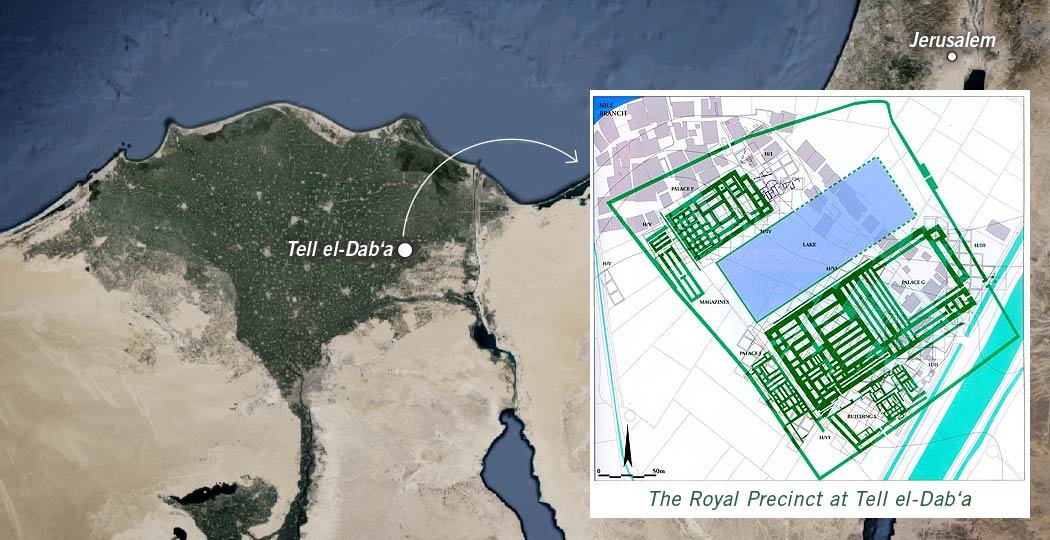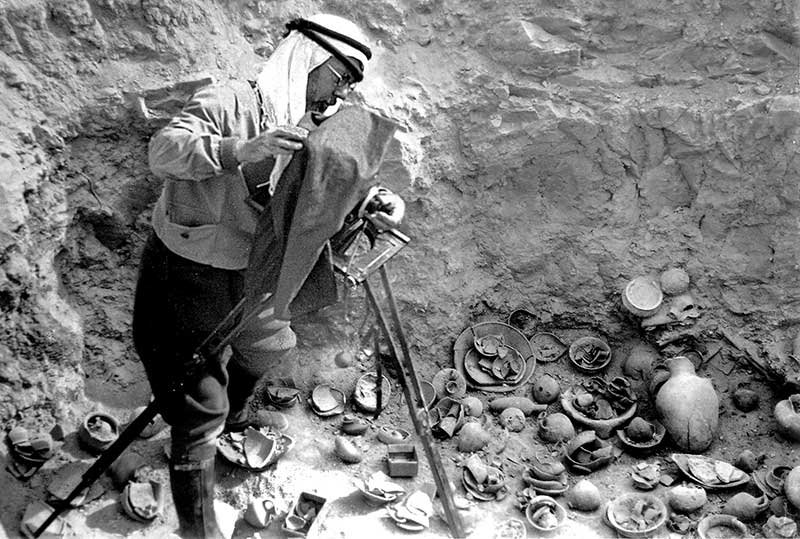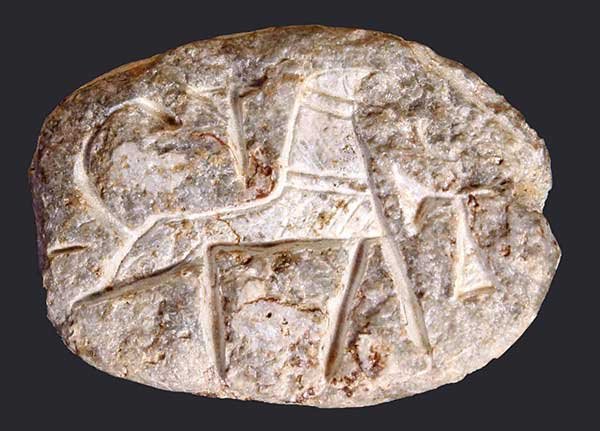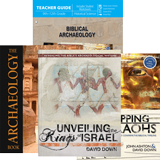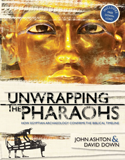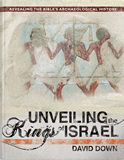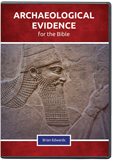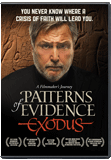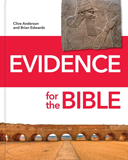Digging Past the Doubts
Today most archaeologists claim that no evidence supports the Bible’s claims about many Old Testament events. There is a problem, but it’s not with the evidence.
Have you ever tried to share your faith and heard these ominous words? “But archaeology has disproved the Bible!” If you haven’t, it’s coming soon. As our Western culture increasingly abandons all semblance of Christianity, more and more people think the Bible is just a bunch of myths.
Perhaps you’ve been taught to respond confidently: “Recent discoveries have forced archaeologists to admit the reliability of Old Testament history.” But the answer is much more complicated than that. In fact, most experts are now saying just the opposite. They’ve been looking very hard for evidence of biblical events, but nothing has turned up, they say.
So if you don’t know how to respond to these questions, your gospel presentation could effectively end right there. Answers really do matter.
The short answer is encouraging. Archaeologists have found evidence that supports the Bible, but many times the evidence is ignored because of preconceptions about the Bible’s historicity, or their dates or places are wrong for the biblical events. The longer answer is even more exciting. Any supposed contradictions turn out to be human errors, not Bible errors. Consider five of the most common examples.

1. Tower of Babel
Biblical Account: Genesis 11:1–9
Those who hold that discrete traditions were at some stage combined [to form the Tower of Babel account] point to the separate motifs of dispersion, erecting a tower to storm the realm of the gods, and the confusion of tongues found in extrabiblical sources. . . . In their original form, such narrative motifs emphasized either: (1) an important etiology [a mythical story made up to explain something], e.g., why humankind speaks more than one language; or (2) a significant religious teaching, e.g., the danger of encroaching upon the habitat of the gods.
—Frank A. Spina, Professor of Old Testament, Seattle Pacific University1
Most scholars write off the Tower of Babel account by pronouncing it an “etiology,” a story like other ancient myths used to explain something in the real world. In this case, Genesis 11:1–9 explains why there are so many language families throughout the earth.2 When we delve deeper, however, we find that the account is not made up, but rather rooted in solid historical fact. Two ancient clay tablets have been found that record Mesopotamian versions of the event.
Briefly, the first tablet, now in the British Museum and very fragmentary, tells of the destruction of a building on a mound in bābel,3 by a god who “confused or mixed” (bālal, as in Genesis 11:7, 11:9) the speech of the builders (Figure 1).4
The second tablet, now in the Ashmolean Museum in Oxford, England, contains an intact account of the incident. This version, embedded in a much longer composition called “Enmerkar and the Lord of Aratta,” helps us pinpoint where the event might have occurred.
It says, “In those days . . . (in) the (whole) compass of heaven and earth the people entrusted (to him) could address [the god] Enlil [lord of the air], verily, in but a single tongue. In those days . . . did Enki, . . . . leader of the gods, . . . lord of Eridu estrange the tongues in their mouths as many as were put there. The tongues of men which were one.”5
Many think the site of Babylon (Al Hillah), a few miles south of Baghdad, is where the Tower of Babel was located. This cannot be the case, however, since the Babylon at Al Hillah was not founded until later, in a period of history known as the Jemdet Nasr Age, after the confusion of tongues and after humans had already spread over the earth.6
A clue to the likely location is given in the Enmerkar text. The god Enki was lord of the city of Eridu, 7 miles (11 km) southwest of Ur in southern Mesopotamia. Since Enki was lord of Eridu, it is logical that the event took place in Eridu.7 Mesopotamian texts indicate that an alternate name for Eridu was Babel.
We know from archaeological evidence that a mass migration referred to as the “Uruk Expansion” took place from this area in the prehistoric Late Uruk Period. The spread of southern Mesopotamian culture from this region is consistent with the biblical description of what happened following the confusion of tongues: “From there the Lord scattered them abroad over the face of all the earth” (Genesis 11:8). Moreover, evidence from excavations at Eridu suggests that a tower, or ziggurat, was under construction at this time, but never completed.8
Secular archaeologists don’t associate this evidence with the Tower of Babel, however, because they mistakenly assume it was a legendary event.

2. Sodom & Gomorrah
Biblical Account: Genesis 19
The Sodom and Gomorrah story reflects yet another motif pattern known from extrabiblical literature, that of divine beings who visit a city to test the hospitality of its people and eventually destroy the inhospitable city. One can compare in this regard the Greek myth of Baucis and Philemon. The presence of such traditional motifs in the biblical narratives raises the possibility that at least some of these narratives are purely products of the storyteller’s art, which of course raises serious questions about their usefulness for historical reconstruction.
—J. M. Miller and J. H. Hayes, professors of Old Testament9
Is the Bible’s account of Lot’s wife and the fiery destruction of Sodom just a myth to warn children about the evils of disobedience?
Two sites in the Rift Valley southeast of the Dead Sea, Bab edh-Dhra and Numeira, which were excavated in the 1970s, perfectly fit the biblical descriptions of Sodom and Gomorrah. The Arabic name Numeira, in fact, can be linguistically linked to the Hebrew name Gomorrah (‘ămōrāh). Both sites were violently destroyed by fire and earthquake around the time of Abraham.
The fire’s destruction even extended to the cemetery at Bab edh-Dhra. Small buildings there (called charnel houses where the dead were placed) were burned by fire that started on the roofs. This is compelling evidence that “the Lord rained brimstone and fire on Sodom and Gomorrah, from the Lord out of the heavens” (Genesis 19:24).
The Bible also tells us that “He overthrew those cities” (Genesis 19:25). Geologist Jack Donahue of the University of Pittsburgh found evidence of a massive earthquake that happened at the same time these sites were burned. At Bab edh-Dhra, the town site is higher than the adjacent streambed by at least 94 feet (28 m); and at Numeira the displacement is 164 feet (50 m). These movements could have been from the Rift Valley sinking, the town sites pushing up, or a combination of the two. Whatever transpired, these enormous displacements are dramatic confirmation of a catastrophic seismic event that took place south of the Dead Sea at the time of Abraham, and the evidence is still visible today.10
Secular archaeologists don’t associate these two sites with Sodom and Gomorrah because they mistakenly assume that they were mythical places.

3. Israelite Slavery in Egypt
Biblical Account: Genesis 46–Exodus 12
Historians acknowledge that, after more than two centuries of archaeological research, there is still an absence of evidence for the presence of Israel in Egypt.
—William Johnstone, Emeritus Professor of Divinity, History, and Philosophy11
For many years archaeologists and historians have claimed that no evidence supports the belief that the Israelites were ever in Egypt. That has now changed. Excavations in the eastern Nile delta at Tell el-Dab‘a, biblical Ramses, from 1966 to the present, have produced abundant evidence for the presence of an Asiatic community that can be identified as the Israelites.
What is exciting about these new finds is that they not only substantiate the biblical record of the Sojourn in Egypt and the later Exodus under Moses, but also greatly enhance our understanding of Israel during this little-known period of their history. Thanks to these findings, we can archaeologically document the Israelites throughout their time in Egypt, from the entry of Jacob and his family in 1876 BC until the Exodus under Moses in 1446 BC (see sidebar on dates).
The earliest evidence is animal pens, soon followed by a small village of simple mud brick houses with an adjoining cemetery. The materials left by that culture prove that the inhabitants were Asiatics who originated in southern Canaan and not native Egyptians. They grew to a great multitude of prosperous urbanites. Suddenly, about 100 years before they mysteriously disappeared, evidence of their urban affluence came to an end. This appears to be the time when Pharaoh pressed Israel into servitude as described in Exodus 1.
Then, in the mid-fifteenth century BC, occupation at Tell el-Dab‘a by both the Egyptians and Asiatics suddenly ceased (Figure 2). Although the excavators are baffled as to what caused this, the Bible tells us exactly what happened in Exodus 3–12.
The lead excavators summarized the current confusion like this: “The palace district was probably abandoned after the reign of Amenophis II [commonly called Amenhotep II]. The suggestion that the peaceful foreign policy of the late reign of Amenophis II and Thutmose IV made this militarily important settlement unnecessary is not convincing. A plague, such as the one documented for Avaris [known in the Bible as Ramses] in the late Middle Kingdom, and associated with Avaris in later tradition [the Bible!], appears to be the most likely solution of this problem, although it cannot be proven at this time.”12
Secular archaeologists are reluctant to connect Avaris with the Sojourn because they have rejected the biblical record of an Israelite presence in Egypt, even though the evidence is staring them in the face!
Dating Discrepancies
In the margins of Bibles you may see different dates for biblical events. The details may seem relatively minor but are important when it comes to correlating the findings of archaeology with biblical chronology.
The main difference is the time the Israelites spent in Egypt. Some chronologies, such as the one produced by James Ussher (1581–1656), assert that Israel’s 430-year sojourn began while Abraham was in Canaan (see Galatians 3:16–17). But other scholars note that the 430-year sojourn was “in Egypt” (no mention of Canaan), according to Exodus 12:40. So these scholars believe the sojourn began when Abraham’s grandson Jacob moved his family down to Egypt.
This means that some scholars believe Jacob and his descendants spent 430 years in Egypt, while Ussher and others believe they spent only half this time in Egypt (215 years).
Another important difference is based on complex calculations of the reigns of the monarchs after Solomon’s kingdom split in two. Some scholars, such as Ussher, believe Solomon’s work on the Temple began around 1012 BC. Dating back from this date, Ussher arrived at 1491 BC for the Exodus (see 1 Kings 6:1). New findings indicate that the date Solomon began building was 45 years later, in 967 BC. Based on this date, the Exodus would have occurred in 1446 BC. Many modern conservative Bible scholars, including the author of this article, believe 1446 BC is a better date.1

1 For further reading on this subject, see P. J. Ray, Jr., “The Duration of the Israelite Sojourn in Egypt,” Bible and Spade 20 (2007): 85–96, http://www.biblearchaeology.org/

4. Conquest of Jericho
Biblical Account: Joshua 5–6
Jericho was destroyed by fire at the end of the Middle Bronze Age, approximately 1560 BCE. . . . It was this destruction that Garstang [the man who led the first major dig at the site in the early 1900s] attributed to Joshua and the Israelites. He confidently asserted that the story was “confirmed in all material particulars.” There is, however, no evidence linking this destruction with the invading Israelites; in fact, there is no physical evidence of invading Israelites at Jericho.
—Ely Levine, biblical and Ancient Near Eastern scholar13
Many modern critics use the archaeological findings at Jericho to discount the Conquest and all of biblical history prior to that. They say that there is no evidence to back up the biblical account. In fact, skeptics say that the archaeology disproves the Bible. Why? They maintain that Jericho was abandoned at the time of the Conquest and that the biblical account never happened.
British archaeologist John Garstang found evidence for a massive destruction at Jericho that he dated to ca. 1400 BC, about the time of the conquest of Jericho according to biblical chronology.
In the 1950s another British archaeologist named Kathleen Kenyon excavated Jericho and redated the destruction to around 1550 BC—150 years before the Israelites entered Canaan in 1406 BC. As a result, she said Jericho lay in ruins at the time Joshua entered the Promised Land, implying that there was no city for Joshua to conquer. Most modern scholars accept her conclusions.
That would be a serious challenge to the Bible’s integrity, if true. But it’s not. It ignores the pottery in the destruction layer—the basis of Garstang’s date and the focus of my own research on Jericho. This pottery dates to the end of the fifteenth century BC, exactly the time of the Israelite Conquest.14 In addition, Garstang excavated a number of tombs (Figure 3), where he found four scarabs and a plaque with the names of Egyptian Pharaohs who ruled in the fifteenth century BC (Figure 4.1, 3–6). Two are engraved with the name of Pharaoh Amenhotep III, who ruled Egypt from ca. 1408 to 1369 BC. According to biblical chronology, Jericho was destroyed in the third year of the reign of this pharaoh.
More recently, it has come to light that one of Kenyon’s finds, an inscribed cowrie (snail shell), dates to ca. 1485 BC. Ironically, her own discovery disproves her theory that Jericho was destroyed ca. 1550 BC (Figure 4.2). So much for “no physical evidence.”

5. Conquest of Ai
Biblical Account: Joshua 7–8
There is no evidence of a second-millennium Canaanite city at this spot [et-Tell] or at any other site in the region. This constitutes unequivocal archaeological evidence for the lack of correlation between the story in Joshua 8, with all its topographic and tactical details, and a historical reality corresponding to the period of the conquest.
—Amihai Mazar, Israeli archaeologist15
My colleague Henry Smith has already written an excellent summary article in Answers on the so-called “problem” of Ai (July–Sept. 2013, pp. 36–38).16 Archaeologists claimed that Ai should be located at et-Tell, but no evidence was found there for occupation at the time of Joshua. As a result, liberal scholars have dismissed Joshua 7–8 as an etiology.
Why wasn’t evidence found at et-Tell that matched Ai, which the Bible says Joshua conquered by hiding his army? The problem is that excavators were looking in the wrong place. Ai is not located at et-Tell, but at nearby Khirbet el-Maqatir. The details correlate perfectly with the biblical account. Since that article was written, several new, important finds have been made at the Associates for Biblical Research excavation at Khirbet el-Maqatir, in which I personally took part.
Dating of archaeological levels in Israel is typically based on types of pottery. The pottery from the fortress at this site can be dated to about 1500–1400 BC. But pottery dating is somewhat subjective and open to interpretation. The critic can always say, “Dr. Wood doesn’t know what he is talking about; the date is really earlier (or later).” In 2013 we made an unexpected discovery that was named the top find in biblical archaeology that year by Christianity Today. It was an Egyptian scarab dated to the late fifteenth century BC, in agreement with our pottery dating and the biblical date of 1406 BC for the destruction of Ai (Figure 5).
In 2014, we discovered a locally made Canaanite scarab from the construction phase of the fortress. The scarab can be dated between 1668 and 1485 BC. Based on the pottery we found, it was probably closer to the end of that period, around 1500 BC. These two scarabs substantiate our dating of ca. 1500–1406 BC for the life of the fortress based on pottery and the Bible.
As we have seen from these five examples, when the evidence is properly analyzed it always agrees with the biblical record. You can say this with confidence, as you share the gospel far and wide.
Answers Magazine
October–December 2015
Learn what the Bible really teaches about caring for the environment and read the shocking results of a survey showing what the twentysomethings in your church believe.
Browse Issue SubscribeFootnotes
- Frank A. Spina, “Babel (Place),” in The Anchor Bible Dictionary 1, A–C (New York: Doubleday, 1992), 561 (words in brackets added by the author).
- Answers magazine has two articles on the Tower of Babel by David Livingston, the founder of the Associates for Biblical Research where I work: https://answersingenesis.org/
archaeology/ and https://answersingenesis.org/ur- connects- babel- to- today tower-of-babel/ search- for- the- tower- of- babel. - The Greek form of the Semitic name bābel is Babylon.
- For a discussion of the tablet, see G. Smith, updated by A. H. Sayce, The Chaldean Account of Genesis (New York: Scribner, 1880), 161–169.
- T. Jacobsen, “Enmerkar and the Lord of Aratta (1.170),” in The Context of Scripture vol. 1: Canonical Compositions from the Biblical World, ed. W. W. Hallo (Leiden: Brill, 1997): 547–548 (words in parentheses added by the translator; words in brackets added by the author).
- The discovery of writtten documents (clay tablets) ushered in the “historic period.” At that time, there were a number of different languages; therefore the Tower of Babel event must have taken place just prior to that at the end of the “prehistoric period.”
- I strongly disagree with Anne Habermehl’s contention that Babel should be located in the Khabur triangle in northeast Syria (“Where in the World is the Tower of Babel,” Answers Research Journal 4 [2011]: 25–53), https://answersingenesis.org/
tower- . There is no literary or archaeological evidence to suggest that Babel was located in this area. The evidence points to southern Mesopotamia as being the correct location.of- babel/ where- in- the- world- is- the- tower- of- babel - I am indebted to Douglas Petrovich, ABR associate and assistant professor of biblical history and exegesis at Shepherds Theological Seminary (Cary, North Carolina) for this information. Douglas will be publishing his detailed research on this subject in a forthcoming book.
- J. M. Miller and J. H. Hayes, A History of Ancient Israel and Judah (Philadelphia: Westminster, 1986), 60.
- For more details and documentation, see B. G. Wood, “The Discovery of the Sin Cities of Sodom and Gomorrah,” Bible and Spade 12 (1999): 66–80, http://www.biblearchaeology.org/
post/ .2008/ 04/ 16/ The- Discovery- of- the- Sin- Cities- of- Sodom- and- Gomorrah.aspx - W. Johnstone, “Exodus, Book of,” in The New Interpreter’s Dictionary of the Bible 2 (Nashville: Abingdon, 2007), 372.
- M. Bietak and I. Forstner-Müller, “Ausgrabung eines Palastbezirkes der Tuthmosidenzeit bei rEzbet Helmi/Tell el-Dabra , Vorbericht für Herbst 2004 und Frühjahr 2005,” Ägypten und Levante 15 (2005): 93, 95; translation by ABR Board member Walter Pasedag (words in brackets added by the author).
- E. Levine, “Jericho,” in The New Interpreter’s Dictionary of the Bible 3, ed. K. D. Sakenfeld (Nashville: Abingdon, 2008), 239 (words in brackets added by the author).
- In 1999 I wrote a detailed article on the amazing correlations between the archaeological findings at Jericho and the biblical record. See https://answersingenesis.org/
archaeology/ .the- walls- of- jericho - A. Mazar, “The Iron Age I,” in The Archaeology of Ancient Israel, ed. A. Ben-Tor (New Haven, Connecticut: Yale University, 1992), 283 (words in brackets added by the author).
- Answers, July–September 2013. See https://answersingenesis.org/
archaeology/ .getting- archaeology- right- at- ai
Recommended Resources

Answers in Genesis is an apologetics ministry, dedicated to helping Christians defend their faith and proclaim the good news of Jesus Christ.
- Customer Service 800.778.3390
- © 2024 Answers in Genesis




